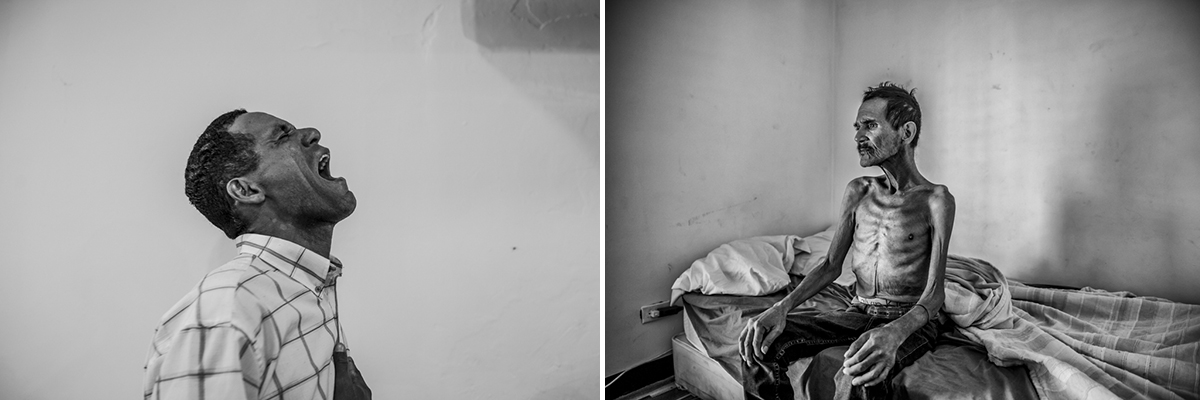2020 Finalist
Book Award Years

State of Decay
by Alejandro Cegarra
Finalist of the 2020 FotoEvidence Book Award with World Press Photo
I grew up seeing Hugo Chavez in the T.V. I still remembered when he died of cancer, leaving behind an orphan revolution. His presidency had the biggest economic boom of Venezuela’s history making it easy to fund his dream of a more equal, safe and less impoverished Venezuela but, five years of his death, Venezuela is less equal, more dangerous and poorer than ever.
Venezuela, ruled by his successor Nicolas Maduro, is a crumbling nation. The world’s largest reserves of oil didn’t help avoid the economic collapse. Less demand of oil, excessive governmental spending, forced expropriations of businesses, U.S sanctions and price controls led the way to hyperinflation and an economic crisis.
To get subsidized and scarce food, people wait in line for hours. The average salary of $10 per month is not enough to buy food on the black market. Food shortages representing 80% of prior consumption are starving entire families. Children are dying of malnutrition or even being abandoned by their parents.
The health system is collapsing. A severe shortage of medicines, the abandon of the infrastructure and the underpayment of the medical staff has led to a humanitarian emergency. People can’t find the most simple antibiotics. Like food the availability of medicine is estimated to have been reduced by 85%.
Violence also has continued to increase. Venezuela is among the most dangerous countries in the world. The country seems at war with itself, with one of the highest murder rates in the world. Every year an average of 24.000 Venezuelans die because of violence. Some say two Venezuelans per hour.
The decay of society led to massive protests in 2014 and 2017. Protesters clashed in what it felt it was the last battle against the government and they lost. One hundred and seventy-four people died. More than 5000 people were arrested and hundreds claimed to have been tortured.
State of Decay tells the story, seen from the inside, of the slow motion collapse of Venezuela, a country that I used to call home.

(L) An antigovernment protesters stands in front an improvised barricade made of burned trash.
(R) A woman tries to halt National Guard anti-riot officers during protests against the Venezuelan government, on the Francisco Fajardo highway in Caracas.

(L) A demonstrator puts a rosary over his head before clashing with the Bolivarian National Guard during anti-government protests in Caracas.
(D) Demonstrators with homemade shields at an anti-Maduro protest, in the Altamira neighborhood of Caracas.

(L) Yajaira looks out of a window after hearing shots, while cutting a friend’s son’s hair, in La Bombilla barrio, Caracas. A mother of two, she does hairdressing to pay for supplies and her daughters’ school fees.
(R) A special operations soldier from the National Guard stands in front the slum Cota 905 during a raid.

(L) A pro-government supporter with his face painted with the Venezuelan flag, during Nicolas Maduro’s campaign in 2013.
(R) A man holds a portrait of Hugo Chavez during a political rally against corruption.

(L) Luz Marina’s coffin is carried by her husband and stepson, after she died as a result of a lack of immunosuppressant drugs following a liver transplant.
(R) Yanet Flores poses for a portrait in front the wall with pictures of her daughter, Carolina. Carolina was murdered in the street where she lives when she was caught in a crossfire between gang members.

(L) Saul, an ex-convict sings a song about redemption, 2016.
(R) Ruben Zamora sits on his bed, having lost 20 kg in three months when the homeless center he was staying in ran out of food. He died two days after the photograph.
